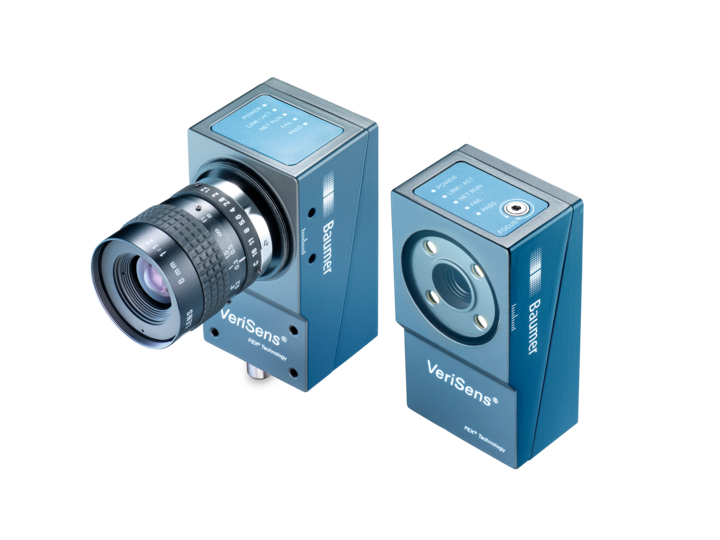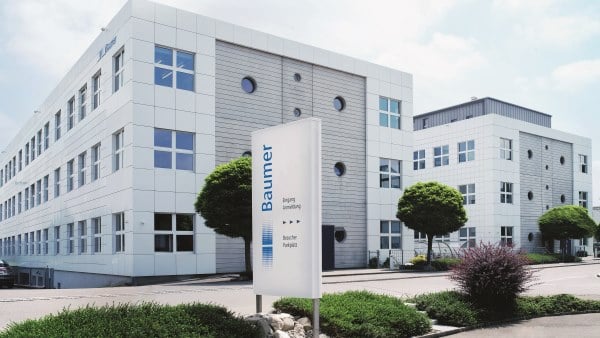Mar 2, 2020
Sighted sensors
Vision sensors – decisive cameras in compact housing
Setting up a PC-based image processing system can be a complex process, involving not only the selection of proper hardware but also choosing specific software and its programming. As a complete image processing system in the shape of a sensor, vision sensors such as the VeriSens models from Baumer reduce the complexity of the selection process for users. Their intuitive parameterization ensures easiest handling with maximum functionality.
A vision sensor – as the name implies – is a sensor that can see. This means it combines the best of two worlds. As a sensor, it is a smart and compact component that detects states and generates signals based on them. With its "sight" capacity, it additionally offers access to the multifaceted possibilities of modern image processing.
Vision sensor – in search of a definition
Colloquially, vision sensors are often described as "cameras", which possibly comes closest to the perception of the product by most people. An Internet search, on the other hand, quickly comes up with terms such as "smart camera" or "intelligent camera," as there is currently no generally established definition. For example, the AIA classifies vision sensors as a type of smart camera: "A lower-end smart camera. A smart camera with less flexibility and programmability that is usually intended for less demanding applications." 1 The VDMA distinguishes them from smart cameras based on their purpose: “Vision sensors also offer a complete system in a compact housing. As opposed to smart cameras, however, they are made for a specific application, e.g., reading codes." 2 A common approach is also to distinguish between a programmable smart camera and a configurable vision sensor such as VeriSens.
Smart in a compact housing
In their compact, industrial-grade housing, vision sensors combine imaging sensor, illumination or illumination connections, optical system, hardware and software, as well as interfaces, for example, for configuration and PLC connection. They are usually configured once on the PC and then fulfill a specific task, similar to conventional sensors. They are designed as inline solution and test products based on images, using various features. Vision sensors such as VeriSens can even carry out up to 32 feature checks at the same time
- Presence and completeness checks
- Determination or inspection of object positions, even of several objects simultaneously
- Reading and verifying imprints in plain text (OCR/OCV)
- Reading and checking matrix codes and bar codes
The image capturing takes place continuously or is initiated by a trigger signal. The movement between the light barrier and image capturing is included via encoder evaluation. A stable image evaluation is essential for reliable results. For this purpose, VeriSens uses, for example, contours calculated in real time. This makes the image evaluation tolerant of influences such as ambient light, varying backgrounds, or fluctuating surface quality.
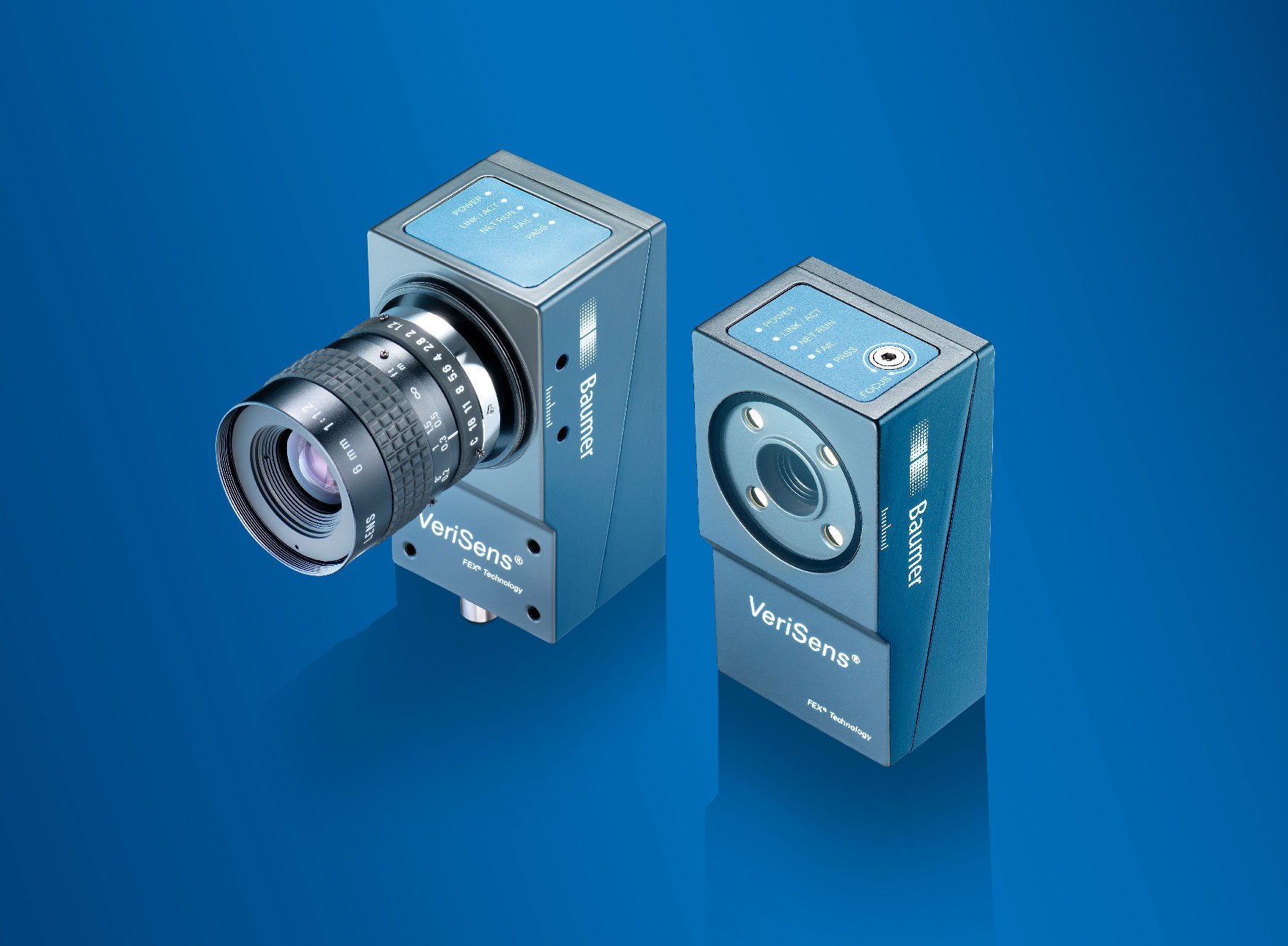
Image processing for "everyone"
Vision sensors are intended to make image processing available to everyone, in order to open up the advantages of image processing to wide groups of users. For example, the testing of several features at once can simplify the system design, increase flexibility, and lower costs. If vision sensors such as VeriSens also operate independent of the positioning, then mechanical object alignment also becomes unnecessary. What is more, the high proportion of software allows a quick adjustment to specific production lots by simply switching to the required job.
Compared to PC-based image processing, vision sensors have the additional advantage that users only have to minimally deal with the many details and the compatibility of configuring an image processing system. While the illumination, focal distance, scope of functions, or connection options must still be defined, they are easily controllable. For example, the suitable focal distance is quickly set with a software tool, and the integrated white illumination is usually sufficient at the beginning. In terms of the scope of functions, it is certainly advisable to start out with the most powerful device. This is the only way to realistically assess what is really needed to fulfill the application.
Are there limitations?
While the pre-selection of hardware and software in vision sensors is convenient for the user, it also has some concept-related limitations when it comes to flexibility. The solution to this are devices with a C-mount interface, such as the VeriSens XC models. Despite their simplicity, with their resolutions of up to 2 megapixels and a free choice of lenses, they offer additional degrees of freedom when it comes to configuration. At the same time, an integrated flash controller provides up to 4 A and 48 V to work particularly efficiently with the connected illumination. This completely eliminates the need for expensive flash controllers and their programming.
As complete image processing is required in addition to the image sensor technology, the housing of high-performance vision sensors is larger than that of industrial cameras, which is also required to resolve the heat factors related to the computing performance. Due to the high water and dust protection class typical of sensors, no integrated fan can be used for this purpose, as with a PC. The heat must be dissipated via the housing to the environment and the metallic connection.
For many inexperienced image processing users, the configuration of a vision sensor is unknown territory, making the software a key element. While PC-based image processing systems make everything programmable, from the individual feature check to the customer-specific user interface, the options of visions sensors are deliberately limited. Therefore, the feature checks, i.e., the image tools and their functions, are universally pre-set and have a rather limited number of adjustment options. This is totally sufficient for many applications in a great number of industries, as the types of required tasks are often similar. For example, the presence and completeness checks can be applied to fuse carriers in the automotive sector as well as to sushi packages in the food industry.
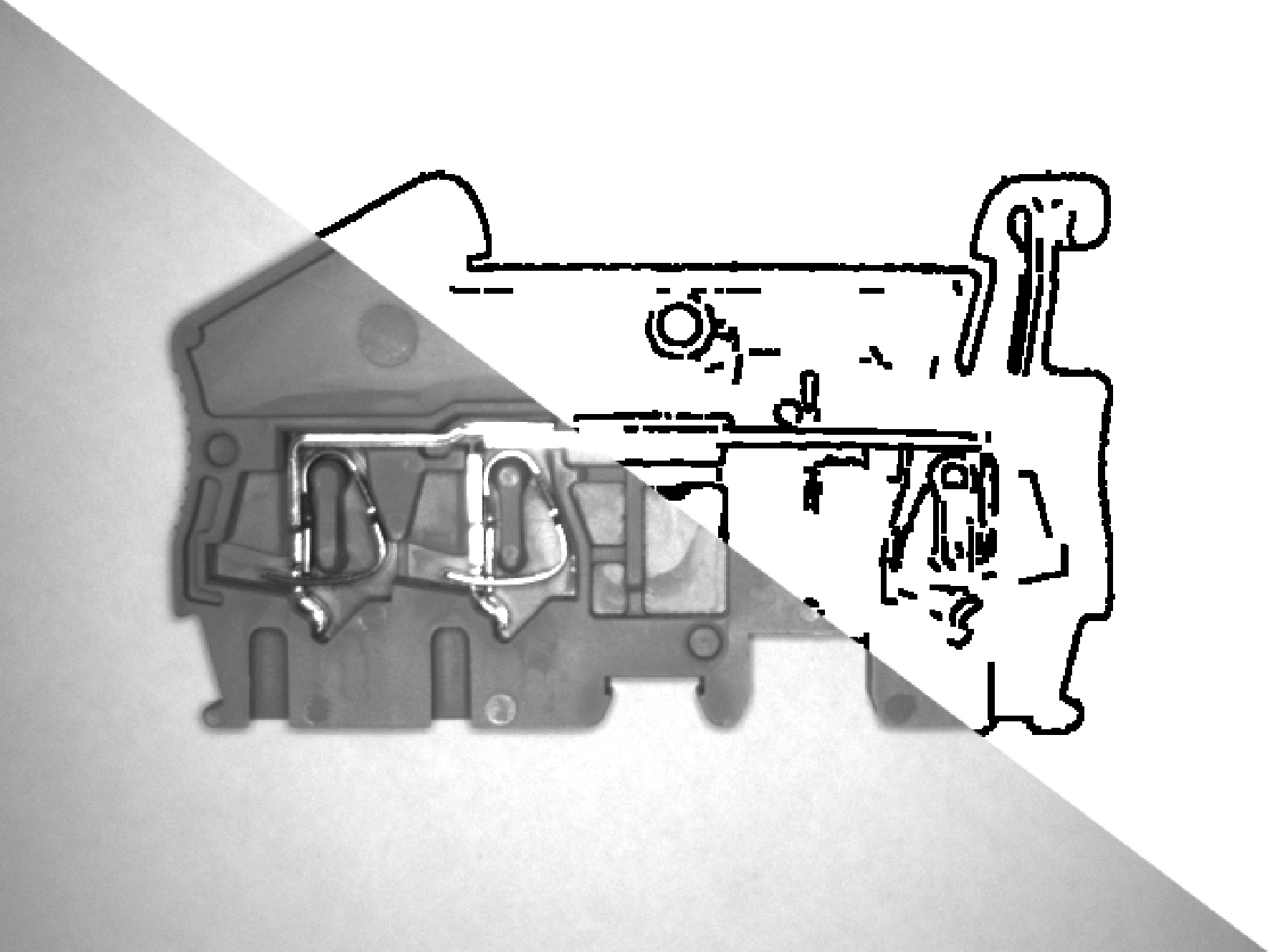
Based on experiences in the field and user feedback, the range of functions of vision sensors is also constantly upgraded for VeriSens vision sensors. For example, for the "in-topic" of pick-and-place or robotics, Baumer has introduced a feature check for detecting several objects at once with an additional clearance check for robot grippers. The additional option of rectifying captured images in real time, even in case of slanted mounting, highlights the performance power of modern vision sensors. This allows them to accommodate clearances for robots as well as packaging applications in which devices are mounted at an angle to avoid image reflections.
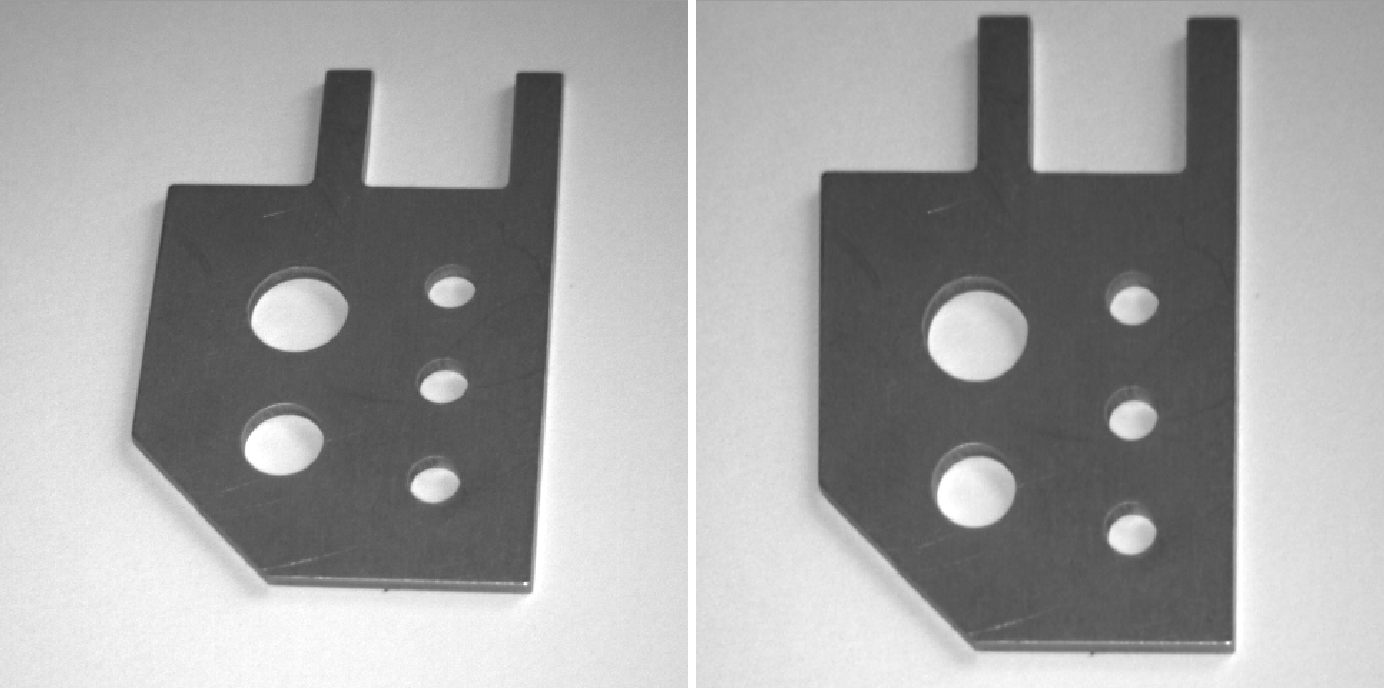
Simple connections
Real-time Ethernet such as PROFINET or EtherNet/IP has long since become a "must have" in networked industries. In addition, vision sensors that address robotics applications, for example, must easily connect to the robot. As image processing is often still new in this sector, simplicity is a major concern. A solution for this is exemplified by the latest VeriSens models for Universal Robots, which can for the first time be automatically calibrated for vision sensors via SmartGrid. The formerly manual "hand-eye-calibration" for the alignment of robot and sensor coordinates, the precision of which depends on the skill of the operator, is therefore fully eliminated.
Adjustable user interface
Similar to a PC-based image processing system, adjustment options are also required for vision sensors during subsequent use. For many years, Baumer has successfully used the approach of a configurable web interface. The job adjustment along with select device functions are accessible via the browser included in the machine control, also by touch screen.
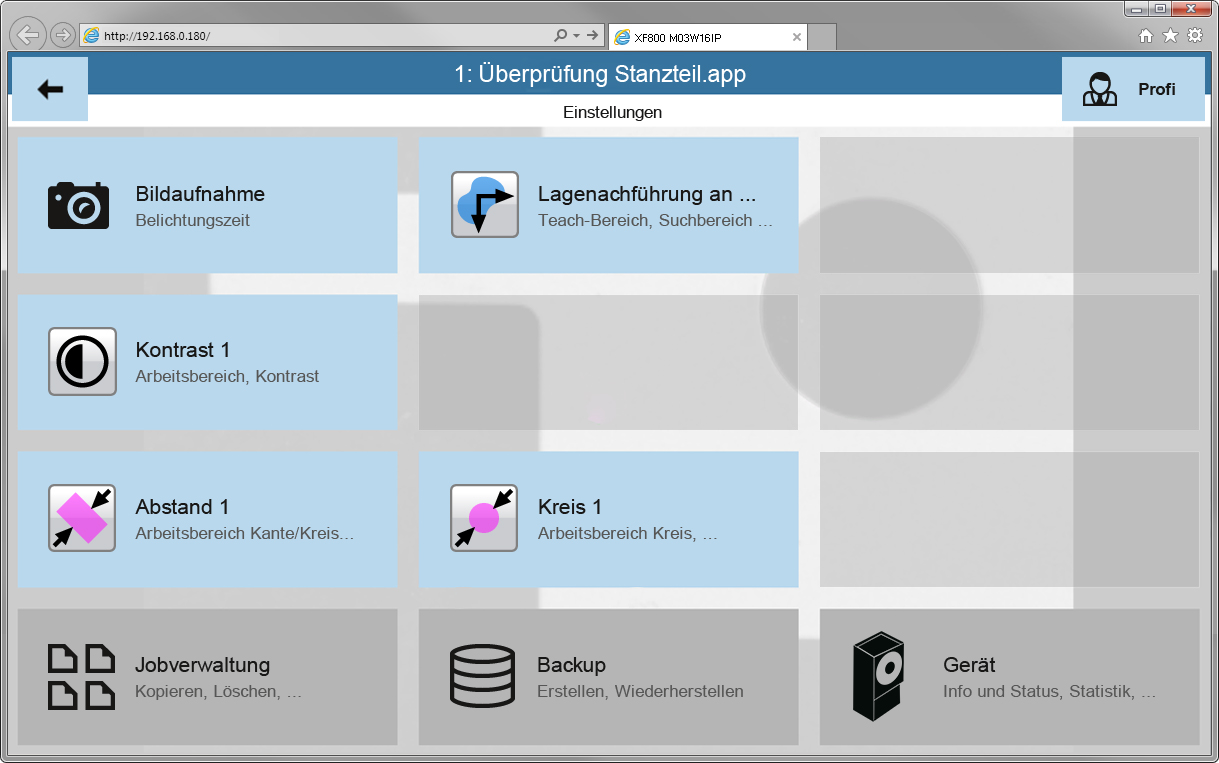
Simple access
Some manufacturers allow the advance download of the parameterization software for their vision sensors. As the software is the key component for the set up and solution of an image processing task, it should be compared during the system selection process. With Baumer vision sensors, testing can be done with images from a mobile phone in JPG format, following a free-of-charge download 3. Thus, nothing stands in the way of immediate entry into the world of image processing.
[1] https://www.visiononline.org/market-data.cfm?id=73 26.08.2019
[2] Industrielle Bildverarbeitung 2018/19 aus http://www.vdma.org/vision 26.08.2019
[3] www.baumer.com/vs-sw
Press download
-
VeriSens vision sensors: Decisive cameras in compact housing
